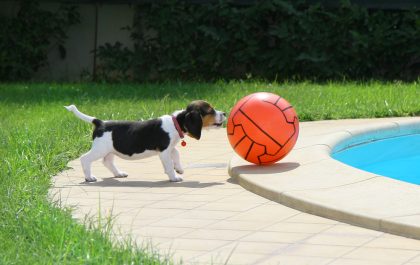Size: Adults can grow up to 1 meter in length.
Lifespan: Water dragons can live up to 15 years in captivity with proper care.
Temperament: They are generally docile and can become quite tame with regular handling.
Housing: They require a spacious enclosure with a water feature, basking area, and plenty of hiding spots.
Temperature: The basking area should be around 35’C and the cool end around 25’C.
Humidity: They require a humid environment of around 80%.
Diet: A varied diet of insects, vegetables, and fruit is recommended.
Health concerns: Water dragons can be prone to respiratory infections and metabolic bone disease.
Interaction: They can be interactive with their owners and enjoy being hand-fed.
Legalities: It is important to check local laws and regulations regarding ownership of water dragons as pets.
Are you considering keeping a Water Dragon as a pet? Water Dragons are a unique and fascinating reptile that can make a great addition to any home. If you are looking for an exotic pet that is both beautiful and easy to care for, then a Water Dragon might be the perfect choice for you. In this article, we will discuss the basics of keeping Water Dragons as pets, from their diet and habitat requirements to their temperament and health concerns. Whether you are a first-time reptile keeper or an experienced herpetologist, you will find plenty of helpful information here. So read on to learn more about these incredible creatures and how to keep them happy and healthy!
Introduction to Water Dragons
Water dragons are a popular pet choice for reptile enthusiasts in Australia. Native to parts of Southeast Asia, water dragons are a type of lizard that is known for its bright green colouring and its affinity for water. These lizards are quite large, reaching up to two feet in length, and are relatively easy to care for.
Water dragons require a large enclosure, with plenty of branches and foliage for them to climb and explore. They also need a large water bowl to soak in, as well as a basking area with a UVB light. It is important to provide a temperature gradient in their enclosure, with temperatures ranging from 24-32 degrees Celsius. As omnivores, water dragons require a varied diet of insects, fruits, and vegetables. It is also important to provide them with dietary calcium and vitamin D3 supplements. With the right care, water dragons can make a great addition to any reptile enthusiast’s collection.
Housing Requirements for Water Dragons
Water dragons are a popular pet choice for many Australians. They are relatively easy to care for and can be a great addition to any home. However, before you bring a water dragon into your home, it is important to understand their housing requirements.
Water dragons need a large enclosure that is at least 2m long, 1m wide, and 1m high. This should be filled with a substrate such as orchid bark, which will help maintain humidity levels. The enclosure should also have a basking area, which should be kept at around 85’F (29’C). To maintain the correct temperature, a high-quality UVB light should be used. Additionally, a water dish should be provided, and the enclosure should be misted twice a day to keep the humidity levels up. Water dragons also need plenty of hiding spots and branches to climb on.
By providing your water dragon with the correct housing requirements, you can help ensure they are healthy and happy. With the right care and attention, water dragons can make great pets.
Feeding and Nutrition for Water Dragons
Feeding and nutrition is an important part of keeping water dragons as pets. A balanced and varied diet is essential for their health and wellbeing. Water dragons are omnivores, meaning they eat both plant and animal matter. A good diet should include a variety of live insects such as crickets, mealworms, waxworms, and earthworms, as well as dark leafy greens, fruits, and vegetables. These should be supplemented with a high-quality commercial reptile food.
It is important to ensure that the food is appropriately sized for the water dragon. Live prey should not be larger than the space between the water dragon’s eyes, as larger prey can be difficult to digest and may cause injury. Insects should also be dusted with a calcium supplement to ensure balanced nutrition. Vegetables and fruits should be chopped into small pieces and offered in moderation. Overfeeding can lead to obesity and other health issues. It is important to provide fresh water daily and to clean and disinfect the water dragon’s enclosure regularly.
Common Health Issues in Water Dragons
Water Dragons are a popular pet choice for many Australians, but they do require a lot of care and attention to ensure they remain healthy and happy. Common health issues in Water Dragons can range from minor to serious, and it is important to be aware of the signs and symptoms so you can provide the best care for your pet.
One of the most common health issues in Water Dragons is respiratory infections. These infections can be caused by a variety of factors, including poor air quality, inadequate humidity, or a weakened immune system. Symptoms of respiratory infections include wheezing, sneezing, and discharge from the nose or eyes. If you notice any of these symptoms, it is important to take your Water Dragon to the vet as soon as possible for treatment. Another common health issue in Water Dragons is parasites, which can be contracted through contact with other reptiles, or from contaminated food or water. Symptoms of parasites include lethargy, loss of appetite, weight loss, and diarrhea. If you suspect your Water Dragon has parasites, it is important to take them to the vet for treatment as soon as possible.
Handling and Taming Water Dragons
Water dragons are a popular pet choice for reptile enthusiasts. They are relatively easy to care for and can be quite docile. However, they can be quite skittish and require a certain amount of handling and taming to ensure they remain calm and comfortable around humans.
When first handling a water dragon, it is important to approach them slowly and calmly. It is also important to ensure they are securely held, as they may try to jump or escape. It is best to start with short handling sessions, gradually increasing the duration as the dragon becomes more comfortable. It is also important to ensure the dragon is not exposed to loud noises or sudden movements, as this can cause them to become stressed.
Positive reinforcement is also an important part of taming a water dragon. Providing treats such as mealworms or crickets can help to encourage them to become more comfortable with handling. Additionally, providing a warm, safe environment with plenty of hiding spots and perches will help to make them feel secure. With patience and consistency, water dragons can become quite tame and even enjoy being handled.
Breeding Water Dragons
Water Dragons are becoming increasingly popular amongst reptile owners in Australia. They are a beautiful species and can make great pets when bred and cared for properly. Breeding Water Dragons is a complex process and requires a great deal of knowledge and dedication.
Firstly, it is important to ensure that the environment in which the dragons are bred is suitable and safe. This includes providing the appropriate temperature, humidity, and lighting. It is also important to ensure that the dragons have adequate space to move around and that they are provided with a variety of food sources. It is also necessary to ensure that the dragons are properly socialised and that they have ample opportunity to interact with other dragons.
Once the environment is suitable, it is important to select the right pair of dragons for breeding. This should be done carefully, as the pairing of the wrong two dragons could result in the death of the offspring. It is important to consider the size, colour, and temperament of the dragons when selecting a pairing. After the dragons have been selected, it is important to monitor them closely throughout the breeding process. This includes ensuring that the dragons are healthy, that the eggs are properly incubated, and that the hatchlings are properly cared for. With the right knowledge and dedication, Water Dragons can be successfully bred and make wonderful pets.
Legal Considerations for Keeping Water Dragons as Pets
The legal considerations for keeping water dragons as pets in Australia are important to consider before deciding to purchase one. Depending on the state or territory you live in, there may be restrictions on the species and number of water dragons you can keep. In most states, you will need to obtain a permit from your local wildlife agency before you can keep a water dragon as a pet.
It is also important to note that the sale of water dragons is restricted in some states. For example, in New South Wales, the sale of water dragons is prohibited unless you have a permit. Additionally, the importation of water dragons into Australia is also restricted. If you are looking to buy a water dragon, you should ensure that it has been bred in Australia and that you have all the necessary paperwork to prove it. Lastly, it is important to remember that water dragons are protected in some states, meaning that it is illegal to take them from the wild.
Final Thoughts
water dragons can make a great addition to any home if they are properly cared for. They require a large enclosure, a varied diet, and plenty of attention. It is also important to be aware of the legal considerations, as well as the common health issues that can affect water dragons. With the right knowledge and dedication, water dragons can be a rewarding and enjoyable pet.
Keeping Water dragon as Pets FAQs
Water dragons are solitary animals and prefer to live alone. They may become aggressive towards other water dragons if housed together.
Water dragons can make good pets for experienced reptile owners who are willing to provide them with proper care.
Yes, water dragons should receive regular check-ups from a reptile veterinarian to ensure they are healthy and address any health concerns.
Yes, water dragons need a large water dish or pool to swim and soak in. This helps them stay hydrated and maintain healthy skin.
Water dragons can grow up to 3 feet long, including their tail.
Water dragons can live up to 20 years in captivity with proper care.
Water dragons shed their skin every 4-6 weeks as they grow. During this time, they may become more inactive and lose their appetite.
Water dragons are omnivores and eat a variety of insects, fruits, and vegetables. They also need a source of calcium, such as a cuttlebone or calcium supplement.
A water dragon is a type of lizard that is native to Southeast Asia and Australia.
Water dragons need a large enclosure with plenty of space to climb, swim, and bask. They also need a heat lamp and UVB lighting to regulate their body temperature and stay healthy.





